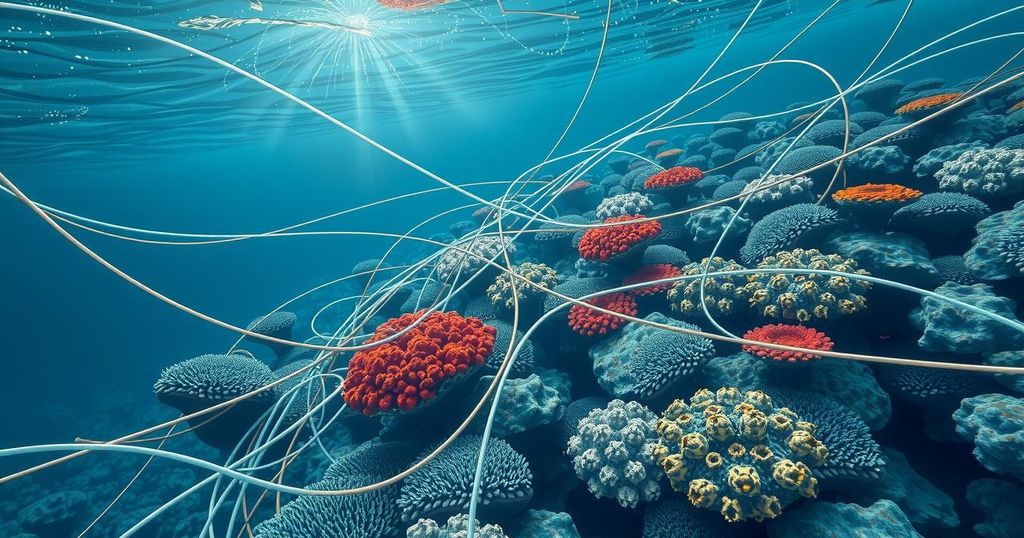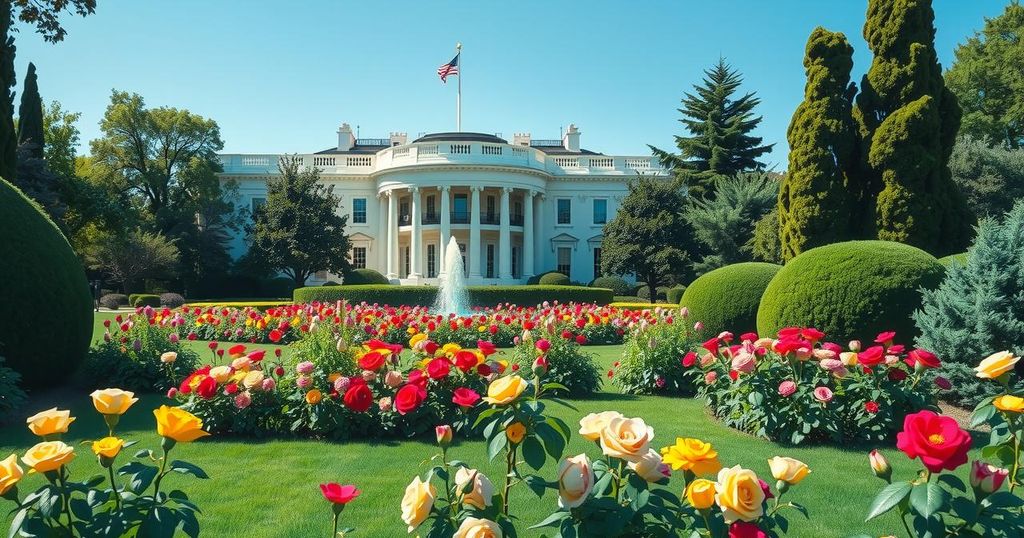Meta’s Project Waterworth aims to construct the world’s longest submarine cable, enhancing connectivity while indirectly providing an opportunity to monitor climate change via SMART cables. These cables can gather vital environmental data, but their adoption is challenged by regulatory, financial, and security concerns. Despite these challenges, proactive investment, particularly from countries like Portugal, could pave the way for effective climate monitoring solutions.
Submarine cables are essential for global connectivity, as recently highlighted by Meta’s announcement to build Project Waterworth, the longest such cable at 50,000 kilometers, linking five continents. This effort aims to enhance technological growth in nations like the United States, India, and Brazil, continuing a legacy that began with the first transatlantic cable in 1858. Presently, approximately 1.4 million kilometers of these cables exist worldwide, which can transmit data at impressive speeds of 300 terabits per second.
However, these submarine cables also offer potential for environmental protection through the deployment of SMART (Scientific Monitoring and Reliable Telecommunications) cables. These cables, a product of collaboration between organizations including the International Telecommunications Union and UNESCO, contain sensors to monitor vital oceanic data such as seismic activity and temperature variations, aiding in early warning systems for natural disasters and tracking climate changes.
Despite the benefits, the adoption of this technology has been slow due to several factors. First, the existing regulatory framework governing submarine cables is outdated and does not address the integration of environmental sensors. This ambiguity complicates the permitting processes necessary for deploying sensing technologies along with cables.
Secondly, there is no clear business model that justifies the costs associated with these sensors, which some executives report could increase operational costs without a direct financial return, apart from government intervention. Lastly, security concerns arise as some governments may perceive these sensing cables as tools for surveillance rather than benign scientific equipment, which raises additional risks.
Advocates for SMART cables highlight the significance of enhanced ocean data for diverse industries, including shipping and energy sectors, as well as for scientific research aimed at comprehending climate change. Overcoming regulatory hurdles is imperative for promoting investments in sensing technologies. Support for initiatives such as Meta’s Waterworth Project could ensure the incorporation of sensors, potentially creating an open-access database for ocean observation.
Portugal’s proactive investment in SMART cables serves as a model for other nations seeking to contribute toward climate data improvement despite existing challenges. While embedding sensors might not singularly rectify climate change, it is a critical step in understanding our oceans and addressing pressing environmental issues. Advocates implore for a collective acknowledgment of the need for responsible infrastructure development that serves the public interest.
The exploration of submarine cables presents an opportunity not only for enhancing global connectivity but also for facilitating environmental monitoring through advanced sensing technologies. While regulatory, financial, and security concerns hinder the adoption of these innovations, initiatives like SMART cables could significantly contribute to combating climate change and improving disaster preparedness. By learning from successful cases, such as Portugal’s investment strategy, other countries may be encouraged to adopt similar initiatives that prioritize the public good. In summary, the integration of environmental sensors into submarine cables offers a method of gathering critical oceanic data, which is essential for addressing climate change and enhancing resilience against natural disasters. It is imperative that governments adapt regulations and support infrastructure projects that serve as a public benefit, through sound policy and funding mechanisms.
Original Source: theconversation.com




